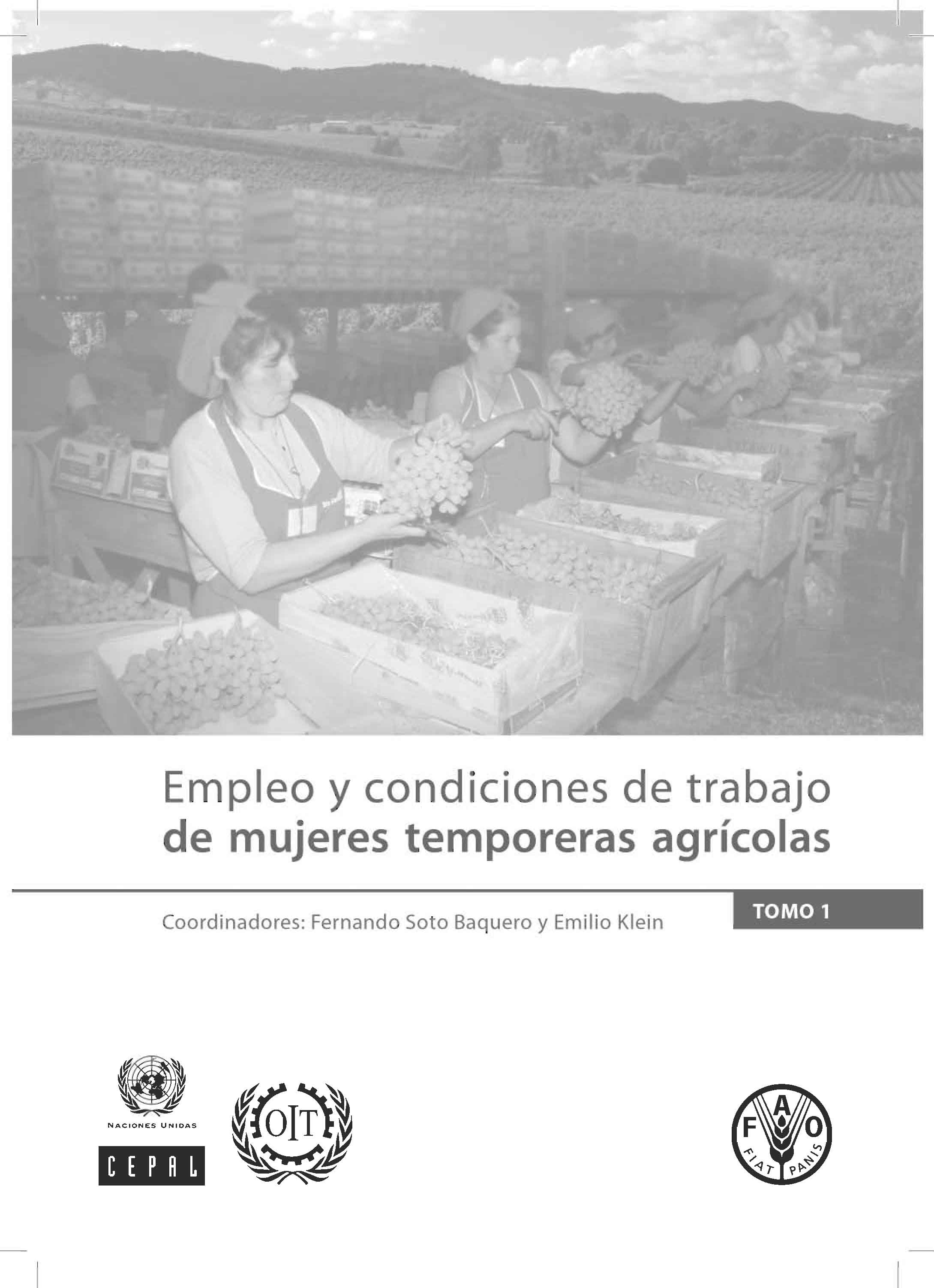Empleo y condiciones de trabajo de mujeres temporeras agrícolas (1,5Mb)
La Oficina Regional de la FAO para América Latina y el Caribe, con la colaboración de la Comisión Económica para América Latina y el Caribe (CEPAL) y la Organización Internacional de Trabajo (OIT) realizó durante los años 2009-2011 una investigación regional titulada Políticas de mercado de trabajo y pobreza rural. En el marco de esta investigación se profundizó el análisis sobre las condiciones laborales en un sector que concentra una importante proporción de mano de obra femenina.


